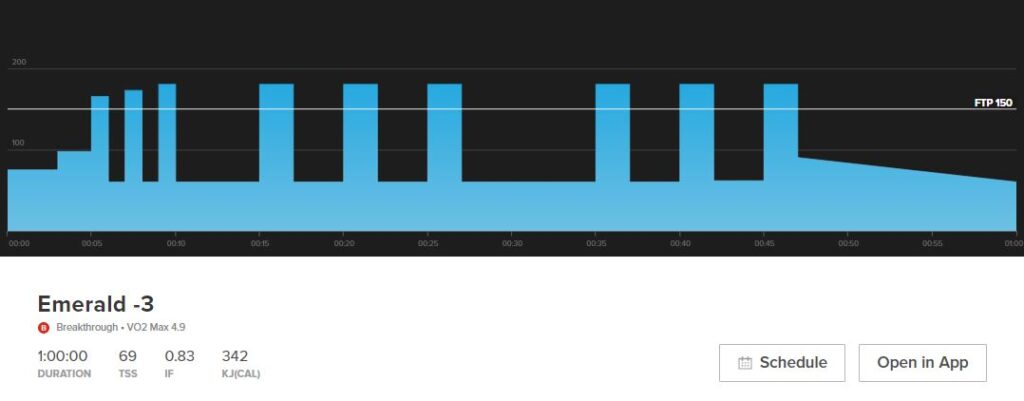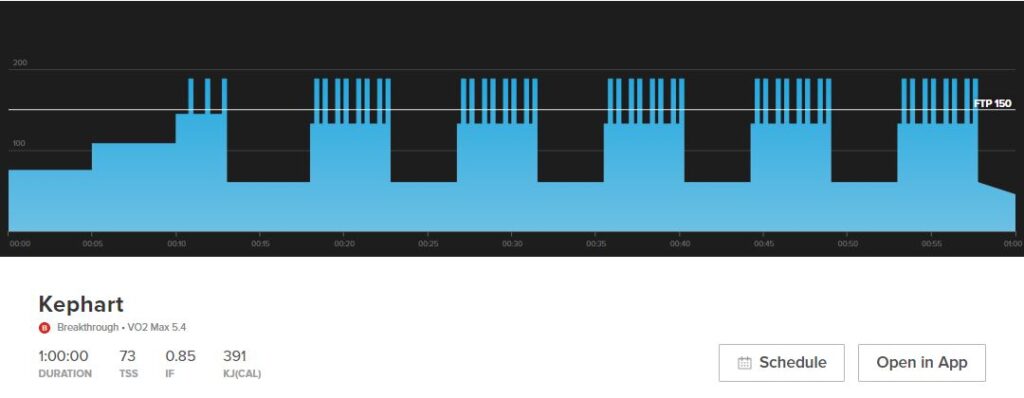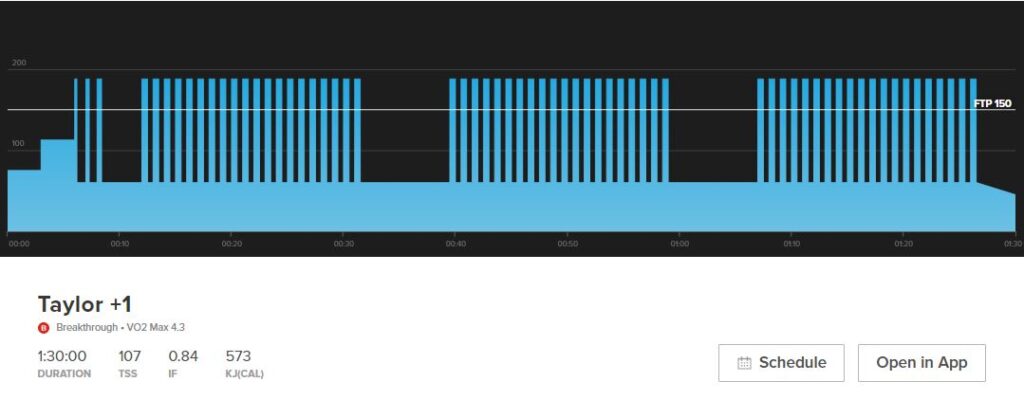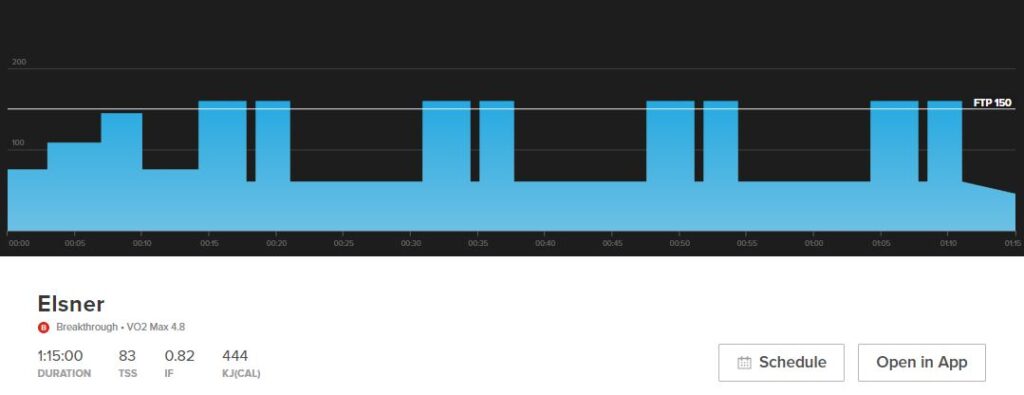VO2 Max Training for Cyclists: How to Improve VO2 Max for Cyclists & Get Faster – TrainerRoad Blog
Many cyclists think their VO2 max is unchangeable, and that this measurement of aerobic capacity is a permanent genetic ceiling and end-all determinant of performance. It turns out this is incorrect and that cycling VO2 max is not fixed. Structured training and VO2 max intervals can significantly improve this key factor, especially when maintained consistently over the long term. Let’s take a look at how.
Table of Contents
For more information on how to increase your cycling VO2 max, check out Ask a Cycling Coach Ep 214.
What is VO2 Max?
VO2 max is your maximal aerobic capacity. Specifically, it means Volume of O2 (oxygen) Maximum and is a measurement of the maximal amount of oxygen your body can effectively consume.
Sign Up Risk-Free for 30 Days
As exercise intensity rises, your muscles use more and more oxygen to fuel aerobic metabolism. Eventually, the muscular demand for oxygen outpaces the cardiovascular system’s ability to deliver it. Any increase in workload beyond this point is fueled anaerobically and is only sustainable for very short periods.
This metric can be an important determinant of ability in endurance sports. The more you improve VO2 max, the greater your capacity to intake and utilize oxygen, and the higher the ceiling of your aerobic ability.
VO2 max can be expressed in 2 ways—Absolute VO2 max refers to Liters of Oxygen used per minute (L/Min), and measures total overall O2 consumption. The average is around 2.5L/min for the untrained man, and around 2L/min for the untrained woman. Relative VO2 max includes bodyweight in the calculation and is defined as milliliters of oxygen consumed per kilogram of body weight per minute (mL/kg/min). Relative VO2 max values are most commonly used in cycling. On average, the relative VO2 max of an untrained man is 40-45 mL/kg:min, and closer to 30-35 mL/kg:min for an untrained woman.
Can VO2 Max Improve?
Yes! Let’s get this out of the way before we go any further. In short, most of the factors that determine VO2 max are highly trainable. This goes against long-held wisdom that it is genetically fixed, and while genes play a big part you can absolutely improve VO2 max directly.
While genetics play a significant role in VO2 max capacity, most untrained athletes still have room to improve by as much as 25%.
It should be noted that cycling VO2 max is not the sole determinant of an athlete’s fitness or potential. A cyclist with a low VO2 max but the ability to sustain power at a high percentage of it will likely be faster than a cyclist with a high one but a poor ability to ride at intensity. This is why properly structured training does more than just improve your VO2 max.
VO2 Max and Cycling
Even though it’s not the sole determinant of cycling performance, training to increase your cycling VO2 max carries other benefits as well in two important ways. First, you can improve your fractional utilization. This is the percentage of your cycling VO2 max that can utilize while sustainably riding.
Adaptive Training
Get the right workout, every time
with training that adapts to you.
The second improvement deals with the slow component. This your body’s decreased efficiency as it works at high intensity. And work above FTP, if it lasts long enough, will eventually push you to maximal oxygen uptake, which makes it difficult to sustain power. A high oxygen uptake doesn’t necessarily reduce the slow component’s effects, but training to improve VO2 max can raise your FTP and fractional utilization—meaning you can ride at a greater percentage of your cycling VO2 max for longer.
What Determines VO2 Max?
You might assume that VO2 max is a function of respiratory volume, and how much air your lungs can intake. In fact, it’s primarily a function of how much oxygen your cardiovascular system can uptake from the air available in the lungs. This is determined by 4 important factors.
First is cardiac output, the volume of blood moved by each beat of the heart. Since blood carries oxygen, the more blood is moving the more oxygen can be moved with it. Your heart beats faster during exercise for just this reason, but a higher cardiac output means more blood actually moves with each beat.
The second big factor is the oxygen-carrying capacity of your blood. The protein Hemoglobin is the key here, and it is contained within red blood cells; more red blood cells means a greater capacity to carry oxygen and do work. The performance-enhancing drug EPO works by increasing red blood cell production. The third major factor is the circulatory system itself. The more efficient and extensive the network of blood vessels, the more oxygen can be delivered to the muscles.
The final important piece of the puzzle is the efficiency of the muscles themselves. The proportion of different muscle types, capillarization, and the concentration of aerobic enzymes and mitochondria all influence the ability to utilize oxygen and do work. This is affected by the type of exercise. For instance, rowing will have higher values than a cycling VO2 max due to body position and increased muscle recruitment.
Key Terms:
Intake – how much oxygen you’re inhaling
Vital capacity- the maximum amount of air your lungs can expel after taking the largest breath possible
Uptake – how much oxygen you’re body is actually using
Fick Equation: VO2 max = Oxygen Uptake x Cardiac Output
How to Improve VO2 Max With Structured Training
You might assume that VO2 max intervals would be the best way to improve this physiological metric. These intervals challenge you to work right at the limit of your aerobic capacity, but they mostly improve the power you can sustain at this level. However, intervals like these can raise your aerobic ceiling and create room for later to improve VO2 max, and in the process, they’ll bring about aerobic adaptations that benefit your performance across the board.
VO2 Max Intervals

Emerald -3 contains traditional style VO2 max intervals with 6×2-minute repeats at 120% FTP with 3-minute recoveries between intervals and an 8-minute active recovery between sets of intervals.

Kephart is 5 sets lasting almost 5 minutes each consisting of 8×15-second efforts at 125% FTP intermixed with 15-30 seconds “floating” at 88% FTP. VO2 max cycling workouts in general target your aerobic power, pain tolerance, muscular recruitment—both in terms of how hard and how quickly you can muster that strength – and muscle endurance in a manner that coaxes you into doing a whole lot of repeats.

Taylor +1 is a ninety-minute VO2 max workout with three sets of twenty, thirty-second intervals. These types of VO2 Max Intervals look to improve your maximum aerobic capacity by heftily stressing your aerobic capabilities with efforts that pinpoint your repeatable 30-second power.

Elsner targets your VO2 Max capabilities with four sets of six-minute intervals at 106% FTP. While these might not be your typical VO2 max intervals they still help grow your VO2 max capabilities. A noticeable drop from typical VO2 Max power allows far greater time at a potentially very productive power output well above your current sustainable power. The intent is to build greater muscular endurance and mental toughness by working at a high percentage of your maximal oxygen uptake with repeats that thoroughly stress your aerobic system.
Training Plans
To actually improve cycling VO2 max itself, lower intensity work may actually have the biggest benefit. An excellent way to directly target VO2 max improvements is through sweet spot training. As your capacity rises, big improvements become more fleeting, and harder work is required to continue seeing gains. This gradual increase in intensity is factored into all TrainerRoad training plans, especially if you follow a progression through base, build, and specialty phases.
If you are already following a training plan, you’re on the right track. A simple way to stimulate even more VO2 max improvement is to add extra endurance training on top of your existing plan. This can be very easy to do- even an extended cooldown of 15 minutes on each ride can add an hour or more each week. Most of us waste 20 minutes looking at our phone after each ride, but take advantage of this time instead and continue spinning your legs at low intensity.
The single biggest factor in how to improve VO2 max is consistency over the long term. Gains over the short term are relatively small and fleeting compared to what can be achieved over a year or two. Athletes who train hard for specific events and stop training afterward will probably not achieve the same results as athletes that follow a structured plan for several years. By thinking of your training plan as part of a long-term strategy, it can help you unlock big improvements now and into the future.
What Is a Good VO2 Max for Cycling?
In 1994, David L. Costill, Jack H. Wilmore and W. Larry Kenney published the following values for Untrained, Trained and Elite athletes:
FEMALE
MALE
You may notice the Trained and Elite levels overlap. Having a high cycling VO2 max doesn’t automatically mean you’ll be a great endurance athlete—and vice versa. What matters is less about your VO2 max and more about the level of it you operate at.
What are the VO2 max values for top athletes?
Top-level endurance athletes can be as high as 6 L/min (men) and 4 L/min (women) putting men into the 80s and women into the 70s when tied to body weight, way up at the world level.
Below are the values both for the world’s top athletes:
- Greg Lemond (m): 92-94 mL/kg·min
- Lance Armstrong (m): 84 mL/kg·min
- Miguel Indurain (m): 88 mL/kg·min
- Chris Froome (m): 84.6 mL/kg·min
- Flavia Oliveira (f): 76 mL/kg·min
- Oskar Svendsen (m): 97.5 mL/kg·min
- Joan Benoit (f): 78.6 mL/kg·min
For reference, a thoroughbred horse has 180 mL/kg·min (600 L oxygen per minute), and sled-dog huskies weigh in around 240 mL/kg·min.
How Much Can VO2 Max Improve, and How Long Does it Take?
This is where things get interesting. A 15% improvement used to be considered the maximum to expect over an athlete’s career, but observations by Alan Couzens suggest a 15% gain may be feasible in as little as 4-6 weeks. With steady training, longer-term gains may average closer to 25%. This is a big argument in favor of following a consistent, structured training plan.
Observations of many riders back this up. Consider Oskar Svendsen, who set the world record for highest-recorded VO2 max in 2012 at 96.7 ml/kg/min. Over the course of a few years, Svendsen’s aerobic capacity rose almost 30%, then returned to baseline about 15 months after he stopped training.
Another notable example is the cyclist Robert Marchand, who set the world hour record for his age group in 2014. During the two years preceding his record, Marchand’s VO2 max increased by 13%. This might sound relatively unimpressive, if not for Marchand’s age- he was 101 years old at the time of his first test, and 103 for the follow-up! Marchand’s training was low-intensity and low-volume. And yet, he achieved an aerobic improvement equal to what was once considered a lifetime maximum, in only 2 years, at more than 100 years old.
Note: This updated article incorporates information originally posted by Coach Chad Timmerman in 2016, as well as new content.
For more answers to your cycling training questions, listen to our podcast. The Ask a Cycling Coach — the only podcast dedicated to making you a faster cyclist. New episodes are released weekly.
